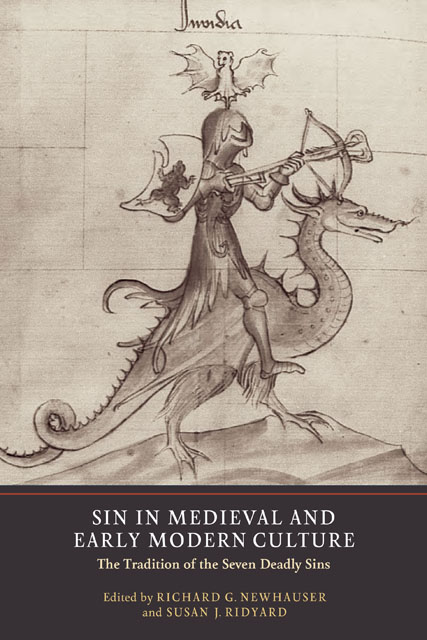9 - The Religion of the Mountain: Handling Sin in Dante’s Purgatorio
Published online by Cambridge University Press: 28 February 2023
Summary
Among the most incisive medieval treatments of the seven deadly sins is Dante’s Purgatorio, where each terrace of the poet’s seven-story mountain entails a painful confrontation with one of the vices (ordered according to Gregory the Great) and a gradual transformation into a corresponding virtue. Whereas Inferno depicts the punishment of acts, Purgatorio addresses the disposition toward evil that remains a stain and a burden even when the soul can no longer sin. Scholars have found partial precedents in Mechtild of Hackeborn, William Peraldus and Conrad of Saxony. Yet the overall effect is entirely new, with Dante’s emphasis on the role of art and worship in the process of turning from vice to virtue. Rather than being a time-bound penitentiary, the ‘middle kingdom’ is shown to be a hospital for the healing of brokenness, a school for learning truth, an incubator in which worms become butterflies and a conservatory where penitents learn to sing the Lord’s song together.
Morton Bloomfield’s magisterial study of The Seven Deadly Sins, published in 1952, closes with the sad reflection that Spenser’s Faerie Queene marks the end of a venerable literary line. To him, the great moral and imaginative concept reaching back more than a millennium to Evagrius Ponticus, John Cassian and Gregory the Great was effectively over and done by the late sixteenth century: ‘The tradition of the Sins was dead; they no longer evolved; they no longer inspired great writing.’
Such a valediction seemed confirmed at the Stanford University Humanities Library when I went to photocopy the chapter of Bloomfield’s book that contains precisely this plangent obituary. There, above the copy machines, was a playful series of framed woodcuts called ‘The Seven Deadly Sins of Book Care’. Each one presented an allegorical figure of Pride, Envy and the rest of the sins, together with appropriate lines from Book One of the Faerie Queene. Along with this evocation of the glorious past was a sevenfold warning tothose using the library today. Take, for instance, the finger wagged at photocopiers who might well be guilty of Avarice:
And yes it’s true
There are a few
Who in their greed
For knowledge
Will break a spine
Upon the glass
And turn a fine book
Into trash.
- Type
- Chapter
- Information
- Sin in Medieval and Early Modern CultureThe Tradition of the Seven Deadly Sins, pp. 223 - 238Publisher: Boydell & BrewerPrint publication year: 2012

